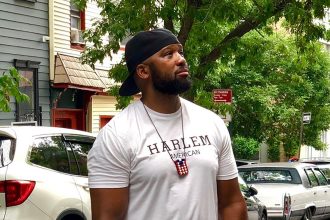So you’ve finished editing your video and you’re ready to upload it for the world to see? There’s just one final step: finding the right soundtrack for your video.
There’s one major problem, however. You’re worried about getting a DMCA strike for your content.
A DMCA strike refers to the possibility of your content being removed because it contains copyrighted content. This usually refers to music but can also include images and video.
So how do you avoid a potential DMCA strike?
Here’s what you need to know:
What Constitutes a DMCA Violation?
So what can cause your video to get taken down due to a DMCA strike?
You want to make sure that you don’t use copyrighted material for which you don’t own the rights to.
But does every implementation of copyrighted content warrant a DMCA strike? The one exception is if you use copyright content within the realm of Fair Use.
Fair Use
This is a legal doctrine that allows anyone to use copyrighted material without requesting permission from the owner.
Fair Use isn’t an explicit law but it can get used as a legal defense if a creator is accused of violating copyright. Fair Use can get defended under the following conditions:
- Was the usage for commercial purposes or for general educational purposes?
- Does the new work transform the nature of the original copyrighted work?
- The amount of the copyrighted work used in the new work
- The potential damage of the copyrighted work caused by the new work
For example, are you a film critic showing clips of a feature film and discussing the film?
Are you using an entire three-minute song in your video? Or are you only using the first 5 seconds?
Are you profiting from someone else’s copyrighted work or do you earn no remuneration from your work?
These are examples of how you can use the Fair Use doctrine to defend your use of copyrighted work.
It’s imperative to know that there aren’t any hard-and-fast rules on what constitutes Fair Use. You have to depend on the defense skills of a lawyer to protect you against copyright violations.
As a general rule, you should only use copyrighted content with the express permission of the owner. Otherwise, the copyrighted material should only get used for critique, parody, and education.
Even then, you might have your content removed from an online platform. Most online platforms will want to “play it safe” and remove any content that might violate copyright.
What Can Happen?
So what happens if you receive a DMCA strike?
In most cases, you’ll receive a warning to remove your content from an online platform. If you don’t, then you can expect the platform to remove it for you.
If you don’t remove content that has received a DMCA strike you might have your entire online account deleted. You might even get sued for using copyrighted material.
In other cases, you might have your content “de-monetized.” This means that your content will no longer generate income as it’ll be withheld by the hosting platform.
As such, if you do receive a DMCA strike you want to respond to it as soon as possible. To play it safe, you should remove your content or edit it to delete any copyrighted material.
If, however, you feel that the DMCA strike is unjustified you can respond to the platform. You can state that you believe that the material falls under the Fair Use doctrine. Or, you can show that you’ve received permission to use the copyrighted material.
You have to remember that even in such cases, you might still be required to remove your content. While it might be unjust, you don’t want to risk having your content removed from the platform due to a DMCA strike.
What You Can Do
Most content creators receive DMCA strikes when they use copyrighted music in their content. As such, it’s always best to use original music for your content.
For images, you’ll want to use images that are part of the public domain. Or, you can use royalty-free images that can get used for your content. You can use stock footage services to add videos to your content.
You can also present your material in a method that doesn’t require using copyrighted material or that can work under the Fair Use doctrine.*
For example, do you run a YouTube channel that discusses films? You might use clips within this video of each film you discuss.
You can consider discussing the film without showing any clips. Or you can show still images from the film or make the clips as short as possible. You can ask the platform what’s the best cutoff times for using video clips without it violating copyright.
You can support independent creators who are often more willing to grant copyright permission.
For example, a major Hollywood studio is unlikely to give you permission to use video clips from any of their productions.
But an independent low-budget filmmaker will want you to promote their film through your own original work. As such, they’re more likely to grant you permission.
You can also use services such as Creative Commons to find media that can get shared as long as you give credit to the author.
In some cases, you won’t have to give any credit to the author. You might even be able to alter the original work or profit from it.
*Please remember that none of this is legal advice and in the event of a DMCA strike, you’ll be expected to present your defense.
Avoid a DMCA Strike
Now you know what a DMCA strike is and how you can hope to avoid one for your content.
To play it safe, try to never use copyrighted content in your own content. If you do wish to use copyrighted content, make sure you get express permission from the owner.
If you do use copyrighted content, you want to be sure that it might fall under the purview of Fair Use.
You can read more legal content on our website!















